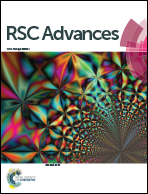A Gd-doped HfO2 single film for a charge trapping memory device with a large memory window under a low voltage
Abstract
In this study, a performance-enhanced charge trapping memory device with a Pt/Gd-doped HfO2/SiO2/Si structure has been investigated, where Gd-doped HfO2 acts as a charge trapping and blocking layer. The device demonstrates a large memory window of 5.4 V under a ±5 V sweeping voltage (360% of the device with pure HfO2), which is extremely attractive in low-power applications. In addition, the device also exhibits good retention characteristics with a 24.5% charge loss after the retention time of 1 × 105 seconds and robust endurance performance with a 1% degradation after 1 × 104 program/erase cycles. It is considered that the high density of defect states and the reduction in the defect energy levels induced by Gd-doping contribute to the performance improvement.



 Please wait while we load your content...
Please wait while we load your content...